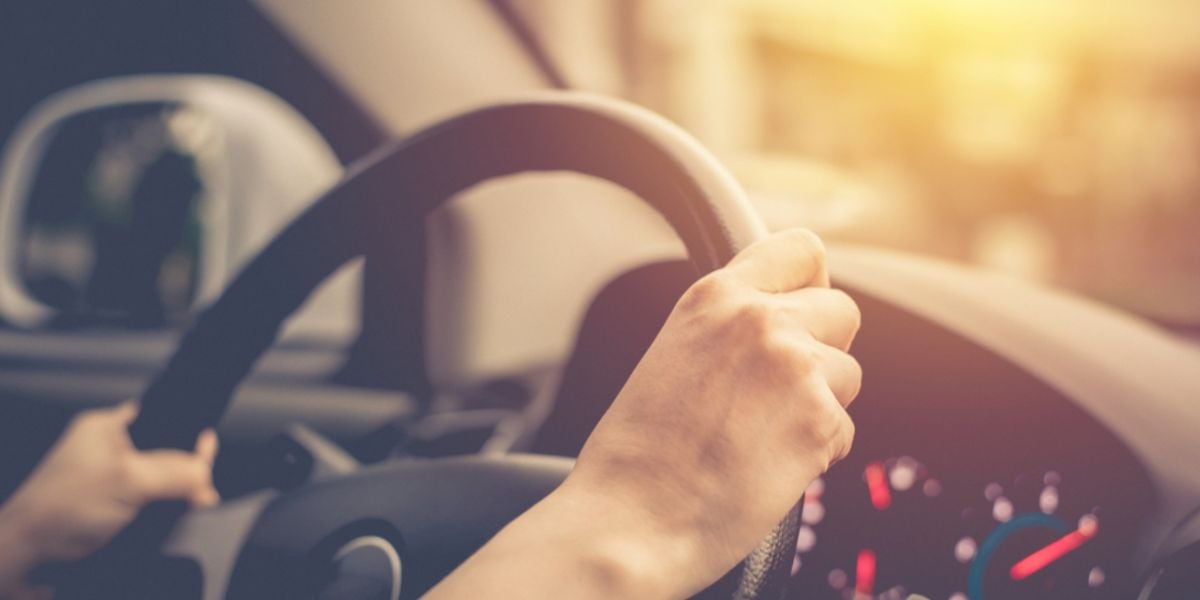
Whether you're buying or renting a car in England, you need a valid UK driving licence. If you don't qualify to exchange your foreign driving licence for a UK one, you can drive in the country for 12 months only after obtaining your residence visa. Following that period, you'll need to take both the theory and practical driving tests to get your UK driving licence.
What you need to drive in England
To drive legally in England, you'll need several things in place:
- You must have a valid driving licence;
- Your vehicle must be registered, insured and taxed before you can use it on public roads;
- If your car is over three years old, you'll also need a valid Ministry of Transport (MOT) certificate.
An MOT test is an annual vehicle safety check that examines your car's roadworthiness and exhaust emissions. Driving a car that has failed an MOT is illegal, and the police can prosecute you if you're caught.
Drivers must also meet the vision standards for driving, which means being able to read a car number plate from at least 20 metres away (with glasses, contact lenses or unaided vision).
Checking your vision is actually a part of your practical driving test in England. If you fail to read the number plate of a parked car, you'll automatically fail the entire test.
Getting your provisional driving licence in England
To get a provisional driving licence, you must apply to the Driver and Vehicle Licensing Agency (DVLA). This can be done online or via the Post Office, though online is cheaper and quicker.
To be considered for a provisional driving licence, you must be at least 15 years and nine months old (but you can start driving with a full driving licence when you are 17) and have legally lived in the UK for at least 185 days in the past 365 days. Documents you'll need to provide are your ID (like a passport), proof of address and your national insurance number.
The cost of the provisional driving licence is £34 if you apply online and £43 by post.
When approved, your provisional driving licence should arrive within one week. Once you have it, you can begin taking driving lessons with an instructor or practice driving with family and friends who are over 21 and have had a full UK or EU driving licence for at least three years. But remember - you can't start having driving lessons without a provisional driving licence.
Then, as soon as you pass your practical driving test, you can apply for a full driving licence.
Good to know:
- If your supervisor doesn't meet requirements, you may be fined up to £1,000 and get up to six penalty points on your provisional licence.
- If you're using someone else's car to practise driving, you should ensure their insurance policy covers you as a learner driver.
- You can't drive on motorways on a provisional driving licence without an instructor and in a vehicle that isn't equipped with dual controls.
- If you drive on a provisional driving licence in England, you must visibly display the ‘L' driving plate at the front and back of your vehicle.
Foreign driving licence rules in England
Rules for driving with a foreign driving licence in England vary depending on where your licence was issued and your residency status.
If you hold a licence from one of the designated countries or territories - including Andorra, Australia, Barbados, British Virgin Islands, Canada, Cayman Islands, Faroe Islands, Falkland Islands, Hong Kong, Japan, Monaco, New Zealand, South Africa, Republic of Korea, Switzerland, Zimbabwe, Gibraltar, Republic of North Macedonia, Singapore, Taiwan, Ukraine, and the United Arab Emirates - you can drive in England (and the rest of the UK) for 12 months after becoming a resident without exchanging your licence.
For EU licence holders, you can drive in England without taking further action on your EU licence. If you require an English driving licence for work purposes, you can exchange your EU licence without retaking any tests.
If you're an expat from a non-EU country that isn't among the designated countries listed above, you can drive on your foreign driving licence for 12 months from when you became a resident in England. After this period, you must apply for a provisional driving licence, then pass both the theory and practical driving tests in order to obtain your UK driving licence.
Ukrainian license holders
If you came to England on a Ukraine visa scheme, you can use your driving licence in England for at least three years after becoming a resident.
You can also use it if you switch to a different type of visa. How long you can use it after that depends on when you successfully applied for entry clearance or permission to stay in the UK.
Exchanging your foreign licence in England
If you're eligible to exchange your foreign licence to a UK one, you can do so up to five years after becoming a UK resident.
The process involves completing the appropriate forms from the DVLA or picking up a DL1 form from the Post Office. You cannot apply online for licence exchange, it must be done by post.
You'll need to send your completed form to the DVLA along with your foreign licence, which you won't get back, proof of identity, a passport-sized photo and a cheque or postal order for £43 in England. Your new UK driving licence should arrive within three to four weeks (but may take longer if the DVLA needs to check a medical condition you've declared).
Taking a driving test in England
If you need to take a full driving test, you'll need to pass both the theory and practical components. You must pass the theory test first before you book your practical test.
Theory test
The theory test costs £23 and consists of two parts which can be booked as a single test. The first part is a multiple-choice questions test and the second part is a hazard perception test, a video test about spotting hazards on the road.
You need to score at least 45 out of 50 to pass the multiple-choice section and 44 out of 75 to pass the hazard perception test.
If you fail at the first attempt, you can retake the test after ten days. Note that each attempt costs £23.
Once you pass your theory, you'll have two years to pass your practical test, or you'll need to retake the theory component.
Learning to drive
There's no minimum number of lessons required before taking your practical driving test in England, although the average person needs approximately 45 hours of professional lessons and 22 hours of practice.
There are no regulated costs for driving lessons in the UK, so instructors can set their own prices, but you can expect to pay around £36 to £45 per hour for lessons.
If you want to speed up the learning process, intensive driving courses are available. A one-day course costs around £200 and can be helpful if you want extra practice just before your test. Week-long courses cost around £1,000, while two-week intensive courses will set you back about £2,000.
The practical test
Your practical driving test costs £62 for weekday appointments and £75 for weekends.
The test takes about 40 minutes and includes an eyesight check, two 'show me, tell me' questions about vehicle safety, general driving ability assessment, pulling over to the side of the road, reversing your vehicle and a period of independent driving which may include following GPS navigation.
You'll pass if you make no more than 15 minor driving faults and no serious or dangerous (known as major) faults. If you don't pass, you can rebook for at least ten working days later.
After passing your practical test, you can apply for your full driving licence at the Post Office. This is free, but you can pay £17 to use a different photo from your provisional.
Types of driving licences in England
When you get your driving licence, it will specify whether it's for manual or automatic cars.
If you pass your test in an automatic car, you can only drive automatic vehicles unless you upgrade your licence by passing a driving test in a manual car.
England has different categories of driving licences covering everything from:
- Mopeds;
- Motorcycles;
- Cars and light vehicles;
- Medium vehicles (like trucks with larger trailers);
- Large vehicles (over 3,500kg);
- Passenger vehicles (like minibuses and buses).
Specialist licence categories also include agricultural tractors, road rollers, tracked vehicles, mowing machines, electric vehicles and trolley vehicles.
To drive a motorhome or a camper van, you need a category C1 or C licence, if it's over 7.5 tonnes.
Good to know:
The driving licence - which is valid for ten years - is also recognised as proof of identity in England. After ten years, you'll need to renew it online or via the Post Office
What your driving licence in England looks like
Your UK driving licence is a pink photocard with a passport-sized photo and the Union Flag.
It contains your first name and surname, your birth date and country, the licence issue and expiry dates, the issuing agency (usually the DVLA) as well as your drive number, your signature, address and details of which types of vehicles you're licensed to drive.
Provisional licences are green and include a red letter 'L' on a white background.
The latest driving licence changes
The UK as a whole is introducing digital driving licences through the yet-to-launch GOV.UK Wallet app.
This will allow you to show your licence digitally on your smartphone, though your physical photocard will still remain valid and will be needed for some situations.
Buying a car in England
If you are buying a used vehicle, it's essential to ensure it's not stolen or unsafe to drive. You should obtain some crucial information from the seller before you make any transactions.
For example, you should ask for the vehicle's registration number, make, model and MOT test number. Also, you should check that the information provided by the seller matches the DVLA information.
Ask for the V5C (vehicle log book), which must have a DVLA watermark. If the serial number is between BG8229501 to BG9999030 or BI2305501 to BI2800000, the V5C might be stolen. In such a case, call the police as soon as you can, always keeping your personal safety in mind. Last, but not least, check if the manufacturer has recalled the car or parts of it due to safety issues.
Finally - remember that you must insure your vehicle before you can use it on public roads.
The highway code in England
You will drive on the left side of the road in England.
Most motorways are free to use, but you may need to pay if you pass through toll roads, bridges and tunnels. Pedestrians and emergency vehicles including fire engines, police cars, and ambulances have priority on the roads.
The speed limit is as follows: 30 miles/h or 48 km/h for all single and dual carriages with street lights and 70 miles/h or 97km/h on motorways.
If police stop you, you must be able to show your driving licence, an insurance certificate, and an MOT certificate for vehicles that are older than three years. If you are missing some of the documents, you may be allowed to present them at a police station within seven days.
If you lose your driving licence in England
If your licence is lost or stolen, report it to the police immediately.
You can then replace your driving licence through the DVLA for £20, and you'll receive it within one to three weeks. You may continue driving while you wait for your replacement.
If you find your old licence after receiving the replacement, you must return it to the DVLA as it will no longer be valid.
Useful links:
Exchange a foreign driving licence
D9 form to register a non-British driving licence with the DVLA
We do our best to provide accurate and up to date information. However, if you have noticed any inaccuracies in this article, please let us know in the comments section below.








